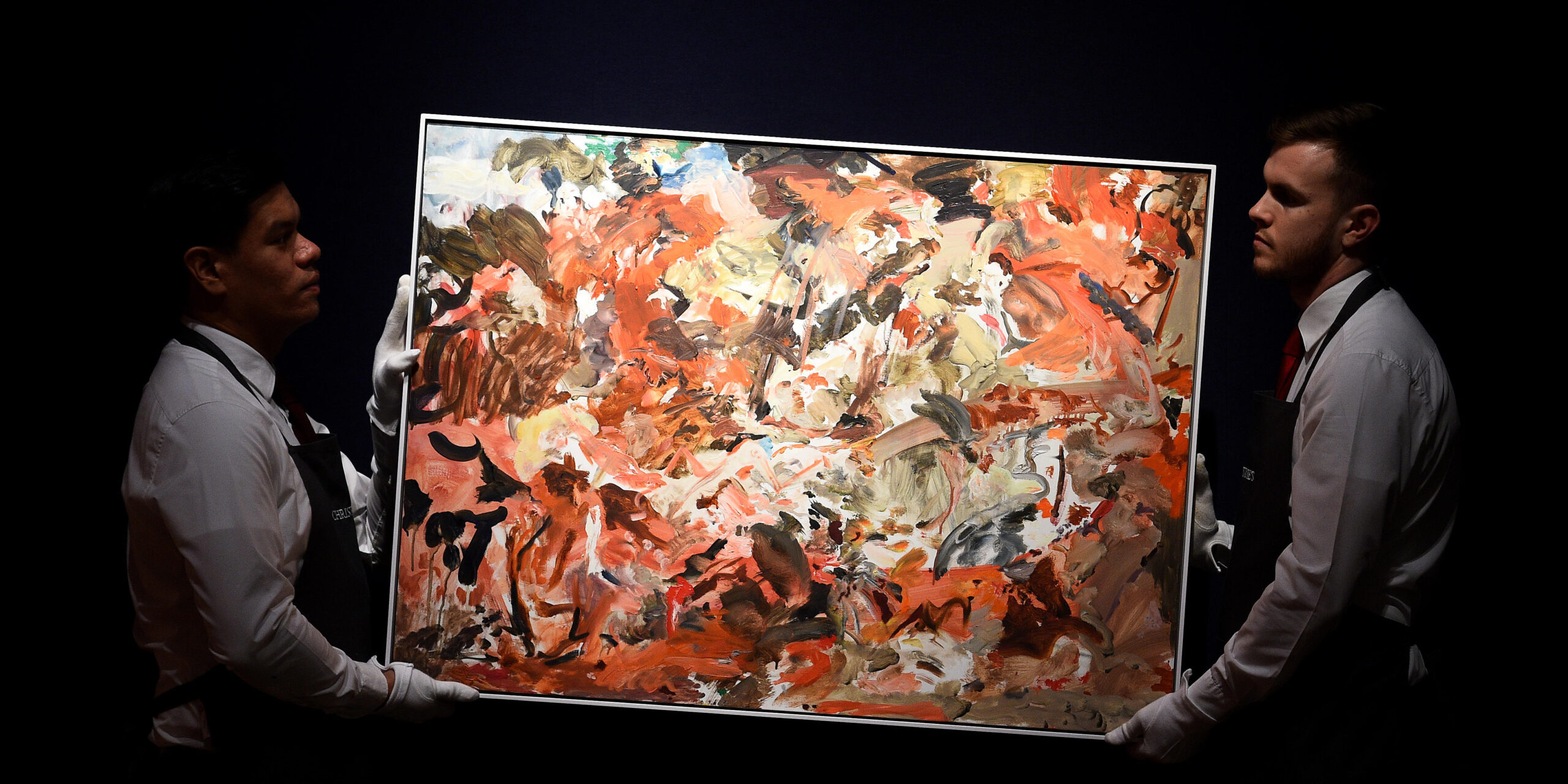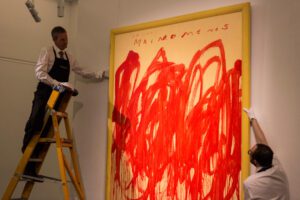
A Short History Of Art Investing
Good investors know diversification can be key to a great portfolio.
For example, if you only invest in stocks, your money could only be subject to the whims of the stock market. On the other hand, investing a portion of your money into alternative physical assets such as fine art is a way to diversify your portfolio and hold long-term investments that have the potential to increase in value regardless of the direction of the market.
These alternatives can hedge against recessions, as they are not as dependent on the global markets.
For example, the S&P plummeted by 57% during the financial collapse of 2008. However, art prices only fell 27.2% during the same period, with Impressionist and Modern Art only falling by 10.1%.
But how did investing in art start, and how has it adapted to our modern times?

Handlers displaying a Cy Twombly. Courtesy of Alamy
The Beginnings Of Art Investing
Let’s go back to 1674 in Stockholm, where Baron Claes Rålamb opened the first auction house. Auction houses like Christie’s and Sotheby’s came about a hundred years later.
At first, it was only the very wealthy who could purchase art and transfer it amongst themselves. In addition, they often served as patrons of great artists to gain exclusive rights to their work. However, this structure changed in 1904 with the first modern art fund.
At the beginning of the 20th century, Andre Level and eleven of his friends decided to pool their money together to buy several Impressionist artists’ works. They held onto these assets for around ten years and then sold them at auction shortly before the first world war.
As a result, these daring compatriots all made a significant profit four times over, ushering in an era that made it much more accessible for the masses to start investing in the art market.

Art handlers with Roy Lichtenstein Vicki! I–I Thought I Heard Your Voice 1964. courtesy of claire doherty/Alamy Live News
In 1973, the fall auction season was spotlighted by the Scull Sale. Robert and Ethel Scull were prominent art collectors that acquired their illustrious collection through their many artist connections in the 1960s. The sale took place at Parke Benet, currently known as Sotheby’s, and was a huge success.
It only took one hour to sell the collection, lot after lot being sold for record prices. In total, the sale brought in $2.2 million, just above the high estimate. The high-profile auction changed the market forever, being the first time Post-War and Contemporary was put on the map and created a massive buzz in popular culture.
The Scull Sale helped establish a fixed interest in the art market and provided attention to the potential of Contemporary art as an investment.

Bidding on art at auction. Courtesy of Alamy
Art Investing Today
In recent history, art investing gained widespread attention when corporations started adding art to their portfolios. One of the major turning points was in 1974 when British Railways began investing in the art market, allocating 3% of their entire worth into the asset class. This action helped legitimize fine art as an asset.
Today, large financial corporations like Deutsche Bank have invested in 55,000 works of art. UBS has invested in over 30,000. It’s increasingly clear that investing in art is viewed by many as a promising way of storing value.
In 2008, British artist Damien Hirst hosted a two-night sale of all new work. Due to ironic circumstances, the first night of the auction was held the same day that Lehman Brothers had collapsed and catalyzed a crisis on Wall Street. The sale was seen as a major success and showcased the appeal of art as an asset during a financial crisis.

Potential art investors looking at laptop. Courtesy of Alamy
Getting Started In Art Investing
The art market is readily adopting new technologies and art forms all the time. NFTs have been a new concept for the mass adoption of art investing and how it continues to affect the art world remains to be seen.
Even if you know nothing about art or don’t have a lot of money to invest, there are still ways to participate in the market. Public art funds like the Anthea or Fine Art Fund return around 9-10% per year.
Another new facet for investing in art is fractionalized ownership, a way of investing an allocation into paintings, similar to a stock. Without a doubt, the last chapter of art investing history is yet to be written.
Your Partners In Art Investing
Masterworks is on a mission to democratize the world of blue-chip art investing. We are a platform that allows everyday investors to invest in shares in authenticated million-dollar artworks.
Our expert acquisitions team identifies potential high-growth artist markets and pieces, and then our art sales specialists get to work authenticating a piece and navigating the sale. All you have to do is speak with one of our membership representatives to get started.
Ready to try your hand at contemporary art investing? Fill out a membership application to learn more.